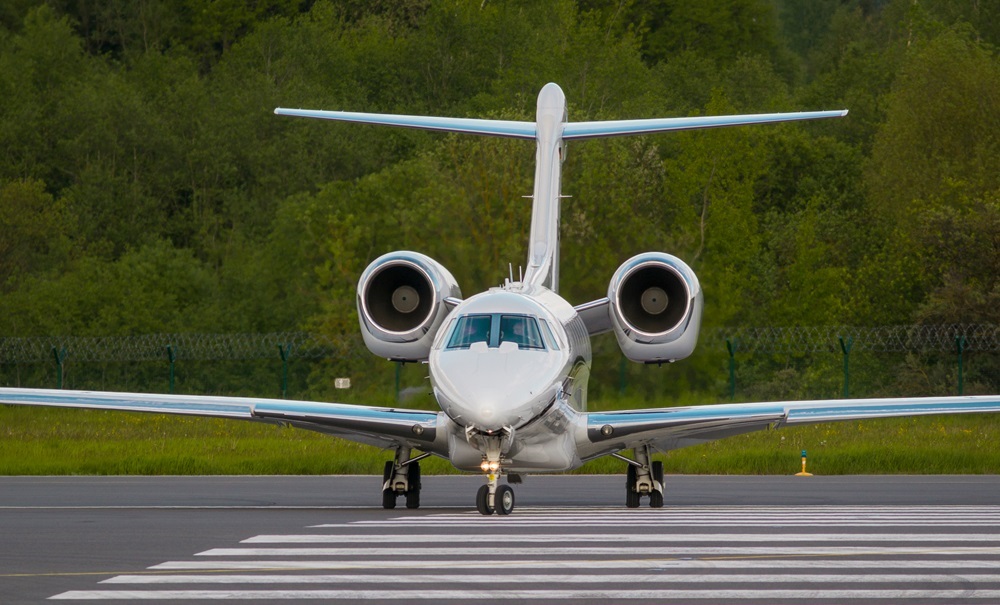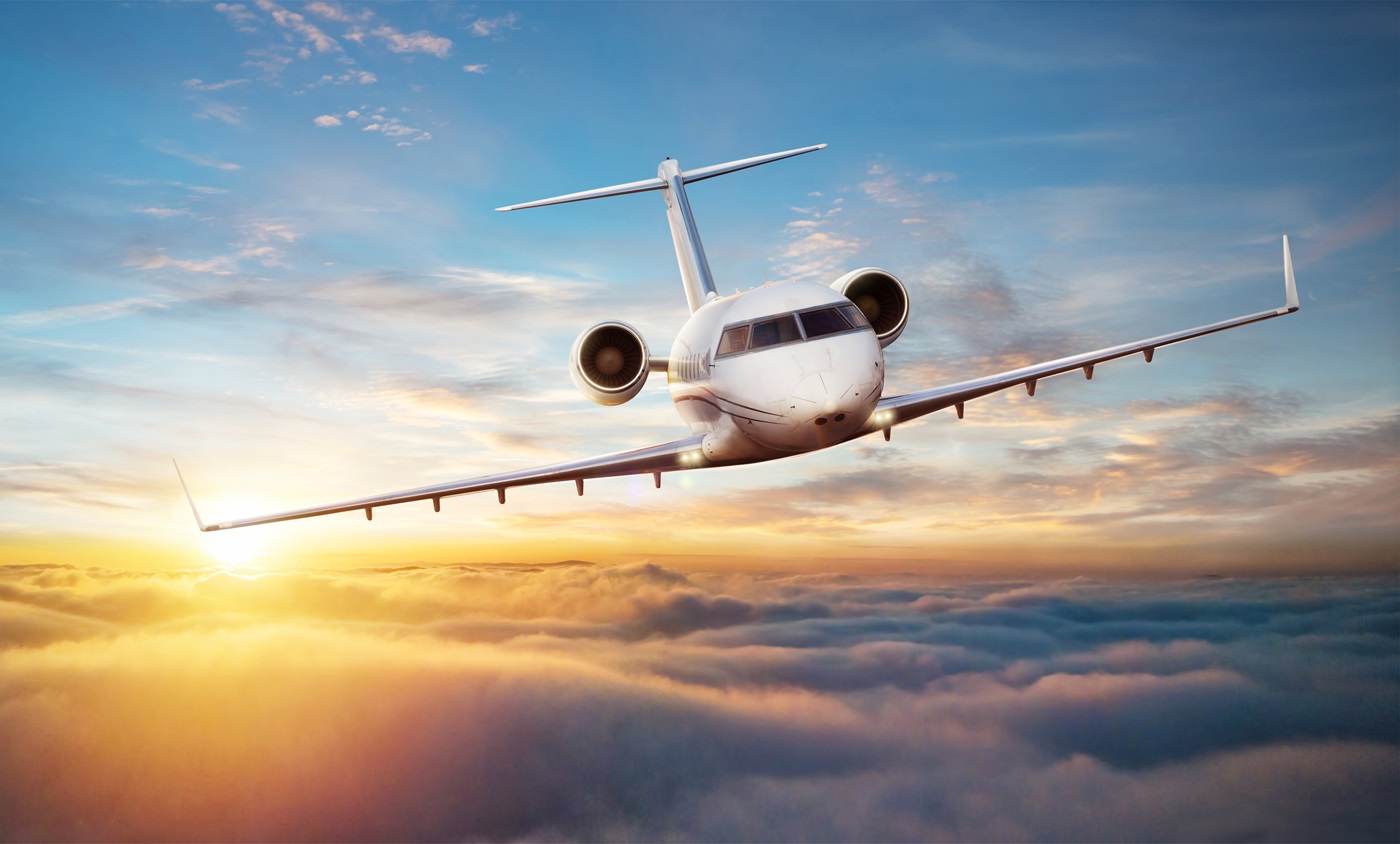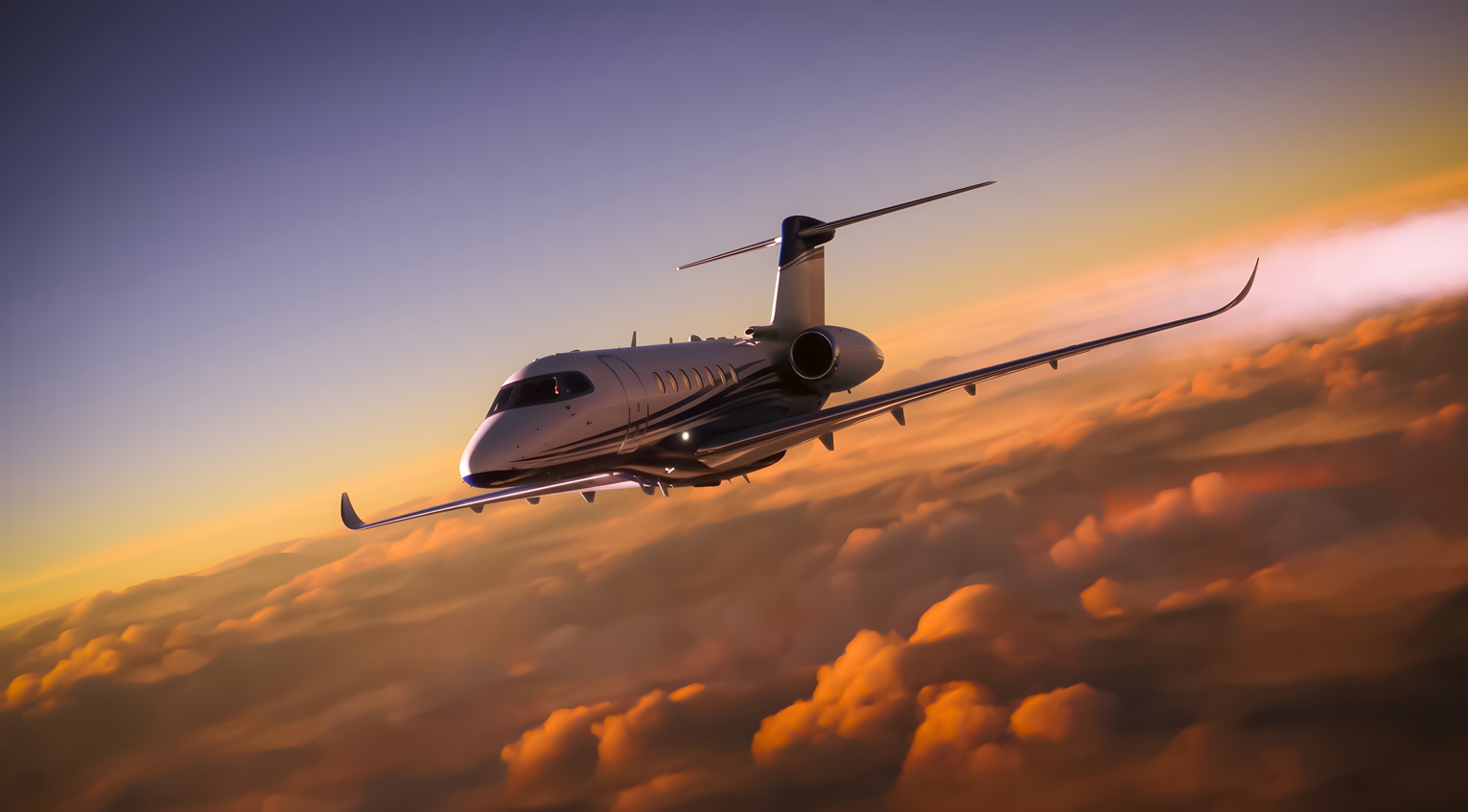
You may have flown aboard a private jet or know someone who travels frequently on a chartered aircraft. If so, you’ve likely heard of the Cessna Citation X, the iconic high-performance jet known for its speed and range capabilities since first taking flight in the 1990s.
Over the decades, Cessna has continuously improved the Citation X’s design and performance, allowing it to break speed records and meet the demands of executive travelers. But how far can today’s Citation X actually travel before needing to refuel? What routes is it capable of flying nonstop?
In this article, we’ll examine the Citation X’s maximum range and capabilities on long-haul flights. Understanding the jet’s limits can help private aviation customers evaluate if it fits their travel needs.
Cessna Citation X: A History of Speed and Performance
Unparalleled Speed and Performance
The Cessna Citation X was engineered to surpass the speed of competing aircraft. Powered by two Rolls-Royce AE 3007C turbofan engines, it achieved a maximum speed of Mach 0.92, making it the fastest business jet of its time.
Its swept wing design and aerodynamic fuselage contributed to its high performance, allowing it to fly at altitudes up to 51,000 feet. The Citation X demonstrated its speed capabilities by setting several world speed records on recognized courses in 2014.
Cabin Comfort and Amenities
While focused on speed and power, Cessna ensured the Citation X provided a high level of comfort. Its spacious cabin could accommodate up to 12 passengers with extra headroom and legroom.
Luxurious leather seats, attractive wood accents and available options like an aft lavatory and in-flight entertainment system provided convenience on long flights. The aircraft also featured a fully equipped galley and available Wi-Fi connectivity.
Reliability and Low Operating Costs
In addition to performance, the Citation X was designed for reliability and efficiency. It boasted an excellent safety record due to its sturdy airframe and advanced avionics.
While fast, it was also fuel efficient for its class, with an economic cruise speed 15-20% faster than competitors. Maintenance costs were reasonable compared to similar aircraft.
These practical factors, combined with its speed and comfort, made the Citation X a popular choice for private and business aviation.
The Cessna Citation X set the standard for business jet performance and helped establish Cessna as a world leader in private aviation. Its unparalleled speed, spacious cabin and practicality have secured its status as an icon of executive jet travel.
Though production ended in 2018, the Citation X’s legacy lives on in Cessna’s current high performance aircraft.
Citation X Technical Specifications and Design
Airframe and Engines
The Cessna Citation X features an advanced swept wing with 37-degree sweep at the quarter chord and a supercritical airfoil enabling high-speed flight. It has a T-tail empennage configuration for stability at high speeds.
The Citation X is powered by two FADEC-controlled Rolls-Royce AE 3007C turbofan engines, each producing 7,034 pounds of thrust, allowing for a maximum cruise speed of Mach 0.92 (528 knots).
The Citation X has a highly aerodynamic fuselage with an area-ruled cross-section for efficient transonic flight.
The wing is mounted below the fuselage, increasing cabin volume. The aircraft has powered controls, including elevators, rudder, and spoilers for redundancy. The rudder has separate hydraulic and electric actuators.
Cabin and Avionics
The Citation X can seat up to 12 passengers in a spacious 538 cubic foot cabin with a height of 5 feet 7 inches, width of 5 feet 5 inches, and length of 23 feet 9 inches.
The cabin layout includes club seats and an optional three-place divan. The Citation X features a fully enclosed lavatory and ample storage space.
The Citation X+ variant introduced in 2014 includes several upgrades, including new avionics such as the Garmin G5000 flight deck, an expanded cabin, and upgraded Rolls-Royce AE 3007C2 engines providing increased thrust and takeoff weight.
The Citation X family delivers an exceptional combination of speed, range, and cabin comfort. With its renowned performance and efficiency, the Citation X has rightly earned its place as an aviation icon.
Citation X Operators and Usage
Commercial and Private Owners
The Cessna Citation X was predominantly operated by wealthy individuals and corporations. Its combination of speed, range, and cabin size made it an appealing choice for business leaders and entrepreneurs requiring fast transcontinental private travel.
Charter Operators
Some charter operators added the Citation X to their fleets due to customer demand for its high performance specifications.
The aircraft’s Mach 0.92 cruise speed allowed charter customers to minimize travel times, while still enjoying the spaciousness of a large-cabin jet. Major charter operators that flew the Citation X included XOJET, Delta Private Jets, and Clay Lacy Aviation.
Government Operators
A few government agencies utilized the Citation X, primarily for fast transport of government officials and staff. The United States military branches did not officially operate the Citation X, though some were used for research purposes.
Foreign government operators included the Royal Thai Air Force, which acquired two Citation X aircraft in the late 1990s and early 2000s.
Decline in Usage
As the Citation X aged and Cessna released newer midsize models with similar or better performance, interest in the Citation X waned. Most operators replaced their Citation X aircraft with newer models that offered lower operating costs, updated avionics, and cabins with more modern designs.
Some Citation X aircraft were also sold into private hands as pre-owned jets. By the time Cessna discontinued the Citation X in 2017, only a handful remained in active service.
However, for over 20 years, the Citation X had been a status symbol in business aviation and held a premier position as one of the fastest and highest-flying private jets. Although outpaced by newer aircraft, the Citation X helped cement Cessna’s reputation for building fast, high-performance business jets.
Citation X Speed Records and Achievements

Speed Performance
The Cessna Citation X is renowned for its high speed and performance capabilities. It holds the title of being the fastest civilian aircraft, with a maximum cruise speed of Mach 0.92 (704 miles per hour).
This exceptional speed performance is attributed to the aircraft’s two Rolls-Royce AE 3007C turbofan engines, which provide 13,000 pounds of thrust each.
In 2010, Cessna introduced an upgraded Citation X+, which further improved the speed and performance. The upgraded engines enhanced the maximum cruise speed to Mach 0.935 (717 miles per hour). To demonstrate the aircraft’s capabilities, Cessna test pilots set four speed records on recognized courses in 2014:
- Wichita to Seattle
- Seattle to Miami
- Miami to Seattle
- Seattle to Wichita
These records highlighted the Citation X’s status as the fastest civilian aircraft and cemented its place in aviation history.
Range and Altitude
In addition to speed, the Citation X provides an impressive range and high altitude flight. It has a maximum range of 3,460 nautical miles and can reach an altitude of 43,000 feet. The combination of speed, range, and altitude allows for efficient long-distance travel and the ability to fly above commercial air traffic and inclement weather.
The Citation X’s performance specs and records set a high standard for business jets. Although production was discontinued in 2017 with only 259 aircraft delivered, the Citation X left behind a lasting legacy as one of the most capable and high-performance private jets ever built.
Its speed and range revolutionized business travel, demonstrating what was possible for civilian aircraft. The Citation X will remain an icon of private aviation for generations to come.
Cessna Citation Longitude Replaces Citation X
To remain competitive in the private aviation industry, aircraft manufacturers must continuously improve their products to meet evolving customer demands and market trends. Cessna’s Citation X, introduced in 1996, was once considered the fastest civilian aircraft, capable of reaching speeds up to Mach 0.92.
However, its range of 3,140 nautical miles and maximum passenger capacity of nine have become limiting factors relative to newer midsize and large-cabin business jets that prioritize comfort and connectivity over speed.
Superior Range and Cabin Comfort
Cessna’s Citation Longitude, launched in 2019, offers significant upgrades over the Citation X. Most notably, its range of 4,500 nautical miles opens up more global city pairs and the potential for nonstop transatlantic flights.
The Longitude also features a larger, more spacious cabin with seating for up to 12 passengers in a circular fuselage configuration with a flat floor. Additional headroom and wider seats provide a more pleasant in-flight experience, particularly on long-haul flights.
Advanced Technology and Performance
From a technical perspective, the Citation Longitude represents a generational leap forward. Its new wing design with winglets and Honeywell HTF7000 engines deliver superior takeoff performance, allowing operations from shorter runways.
A fully integrated Garmin G5000 flight deck provides advanced avionics with automatic performance checks and real-time diagnostics to enhance safety and reduce pilot workload. Fly-by-wire controls also make the Longitude easier to maneuver.
Meeting Customer Expectations
By all measures, the Citation Longitude succeeds in delivering what most business jet customers now expect: a spacious, long-range aircraft with state-of-the-art technology and performance. Given its clear advantages, Cessna’s decision to end Citation X production in favor of the Longitude comes as no surprise.
For operators of older Citation X aircraft, the Longitude presents an appealing upgrade option with minimal retraining requirements, thanks to cockpit commonality across Cessna’s product line. Overall, the Citation Longitude appears poised to capably fill the role once held by the groundbreaking Citation X.
Citation X FAQ
What is the Citation X’s range?
The Cessna Citation X has an impressive range of 3,000 nautical miles, allowing it to complete transcontinental flights or fly nonstop across the Atlantic Ocean. Its two Rolls-Royce AE 3007C2 turbofan engines give the aircraft a high cruise speed of Mach 0.92 (704 mph), enabling fast point-to-point travel for up to 8 passengers.
How fast can the Citation X fly?
The Citation X is one of the fastest business jets, with a maximum cruise speed of Mach 0.92. At this speed, it can travel 704 miles per hour, allowing it to cross the continental U.S. in under 5 hours.
The Citation X used to hold the world record for the fastest transcontinental flight in a business jet. Its high speed and long range make it ideal for quickly transporting executives over long distances.
How much does a Citation X cost?
A new Citation X had a price tag of $27 million in 2019. Used models from the mid-1990s to early 2000s can be found for $3 to $6 million. The Citation X’s combination of speed, range, and cabin size made it an attractive, albeit expensive, option for corporate flight departments and charter operators.
Running costs are also substantial, with fuel consumption of 4,000 pounds per hour and high maintenance fees.
What is the cabin like?
The Citation X has a spacious stand-up cabin that is 6 feet high and 7 feet wide. It features an enclosed lavatory, galley, and seating for up to 8 passengers. The cabin is divided into multiple sections that can be arranged in different configurations for meetings, dining or resting.
Large windows provide ample natural light and viewing. The pressurized cabin allows for a maximum altitude of 45,000 feet, keeping passengers comfortable at the aircraft’s high cruise altitude. In summary, the Cessna Citation X is a high-performance business jet that provides speed, range, and comfort for private air travel.
Its combination of power, efficiency, and luxury has cemented its status as an aviation icon, though high costs have made it inaccessible to most. For those who can afford it, the Citation X remains an aspirational aircraft that epitomizes the pinnacle of private jet travel.
Conclusion
The Cessna Citation X may have reached the end of its production, but its legacy will live on. With its record-setting speed and range capabilities, this aircraft raised the bar for private business jets. Though newer models like the Longitude have eclipsed it in some regards, the Citation X proved Cessna’s ability to innovate and push boundaries in aviation.
For pilots and passengers alike, it delivered a unique combination of performance, comfort, and prestige. Even as its era fades, the Citation X remains an iconic symbol of excellence in private air travel. Its impact on the industry will not soon be forgotten.
Are you interested in finding an exact price for your upcoming trip? Input your trip details here to browse available private jet charter flights, or call +1 (888) 585-3095 for a custom itinerary and quote.



























































